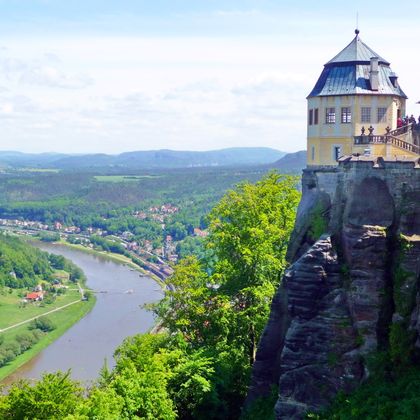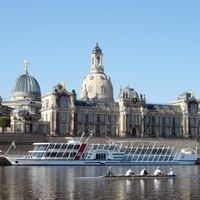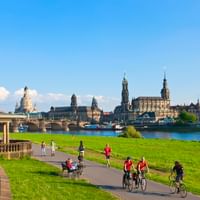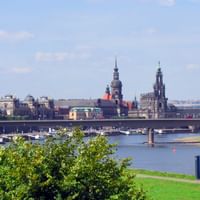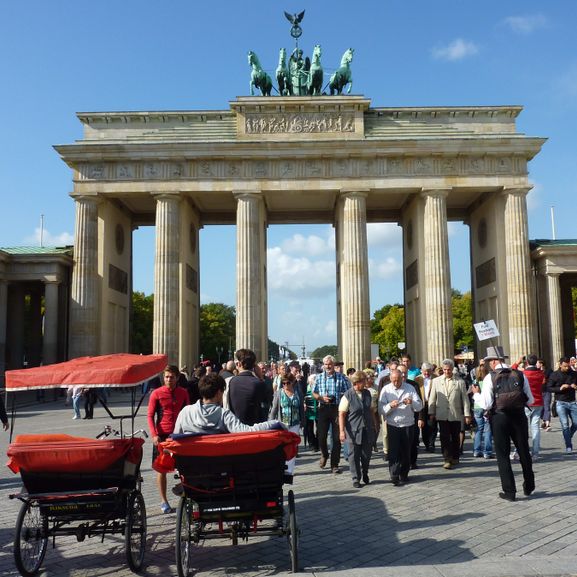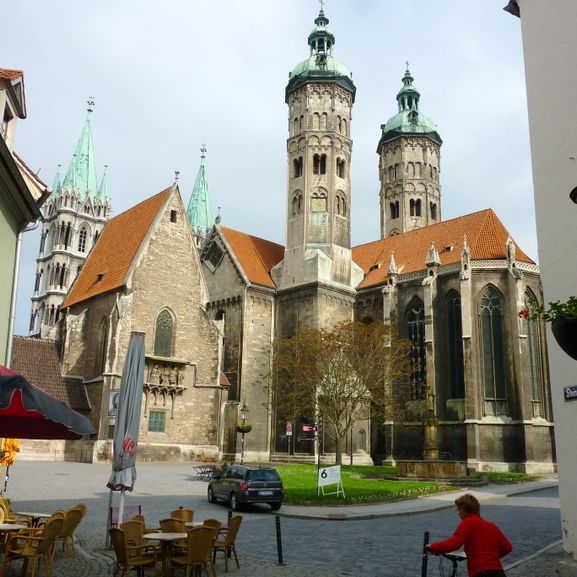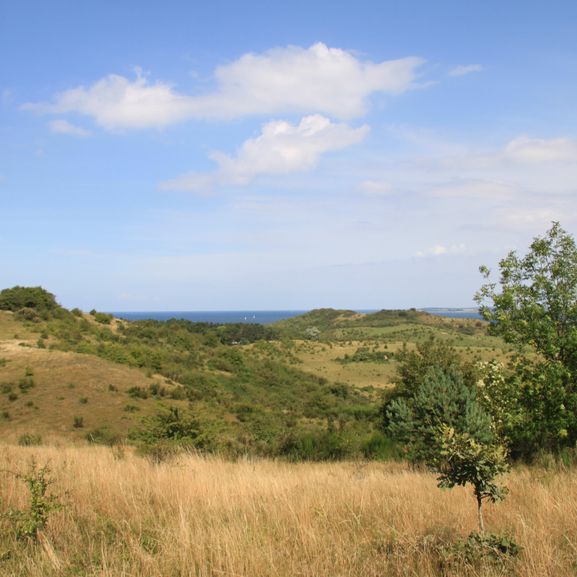The Florence of the North
Cycling trips in Dresden
What an amazing starting and ending point for your bike trip. Dresden, known as the Florence of the North, is a real overall work of art. Fascinating examples of architecture, art treasures and impressive museums wait to be visited: The Semper opera, the Frauenkirche, the former seat of the Saxon electors and kings, the Zwinger and the castles by the Elbe. On your way lies UNESCO word cultural heritage of Fürst Pückler Park, the thousand-years-old town of Bautzen and Görlitz, a town proudly uniting Gothic and Jugendstil.
Relaxed cycling along the Elbe, Spree and Neisse rivers

Monuments and Baroque
Dresden, the German pearl of the Baroque with the historic triangle Zwinger, Semper Opera and Frauenkirche, is enchanting. The wrought-iron "Neustädter Markthalle" is a true work of art from the Wilhelminian period and perhaps the most beautiful market hall in Germany. Follow in Lessing's footsteps in Kamenz and visit the Lessing Museum and the Lessing Memorial. In Spremberg on the Spree River, the Bismarck Tower stands in the middle of a beautiful city park.
In Bad Muskau on the Lusatian Neisse, the landscape architect Prince Pückler-Muskau was born. Muskauer Park, which he planned, is now a UNESCO World Heritage Site and one of the most beautiful landscape parks in Europe. Görlitz has a well-preserved old town worth seeing with restored monuments in many architectural styles, with ornate, colorful facades and artistically painted ceilings. Among many other buildings, the Art Nouveau department store is worth seeing. The Bautzen towers, the Pirna gables, oriels and sitting niche portals - the region is rich in architectural monuments.

Cake culture and viticulture
In Dresden, foodies try the Stollen and the Dresden Baum- or Spießkuchen. Kleckselkuchen and Eierschecke are also typically Saxon. After all, the "coffee Saxons" supposedly have the most cake recipes in Germany to show for their "Scheelchen Heeßen". You just need something to "titschen" in, they say, hence the pronounced cake culture. In the northeasternmost and so-called 13th wine-growing region of Germany, where wine has been grown since 1660, there are dry white wines, mainly Müller Thurgau, Riesling and White Burgundy, but also Elbling, the oldest grape variety, or the specialty Goldriesling, which can only be found here and was bred from Riesling and Courtellier at the end of the last century in Alsace.

Natural paradise
The Elbe is considered to be relatively close to nature and only sparsely developed. Riparian forests and wet meadows can be found along its banks. Even in the middle of Dresden, the green band of the Elbe meadows, up to 400 meters wide, stretches to the left and right of the river. Outside on the slopes of the Elbe, wine culture and the Elbe landscape complement each other in a magnificent way. Let yourself be enchanted by the Lusatian Lakeland, the largest man-made water landscape in Europe, and enjoy nature along the Neisse River and in the Saxon National Park. Sandstone needles and rocky reefs, table mountains and bizarre rock formations in the Elbe Sandstone Mountains will make you pull the brakes again and again to take a photo.

